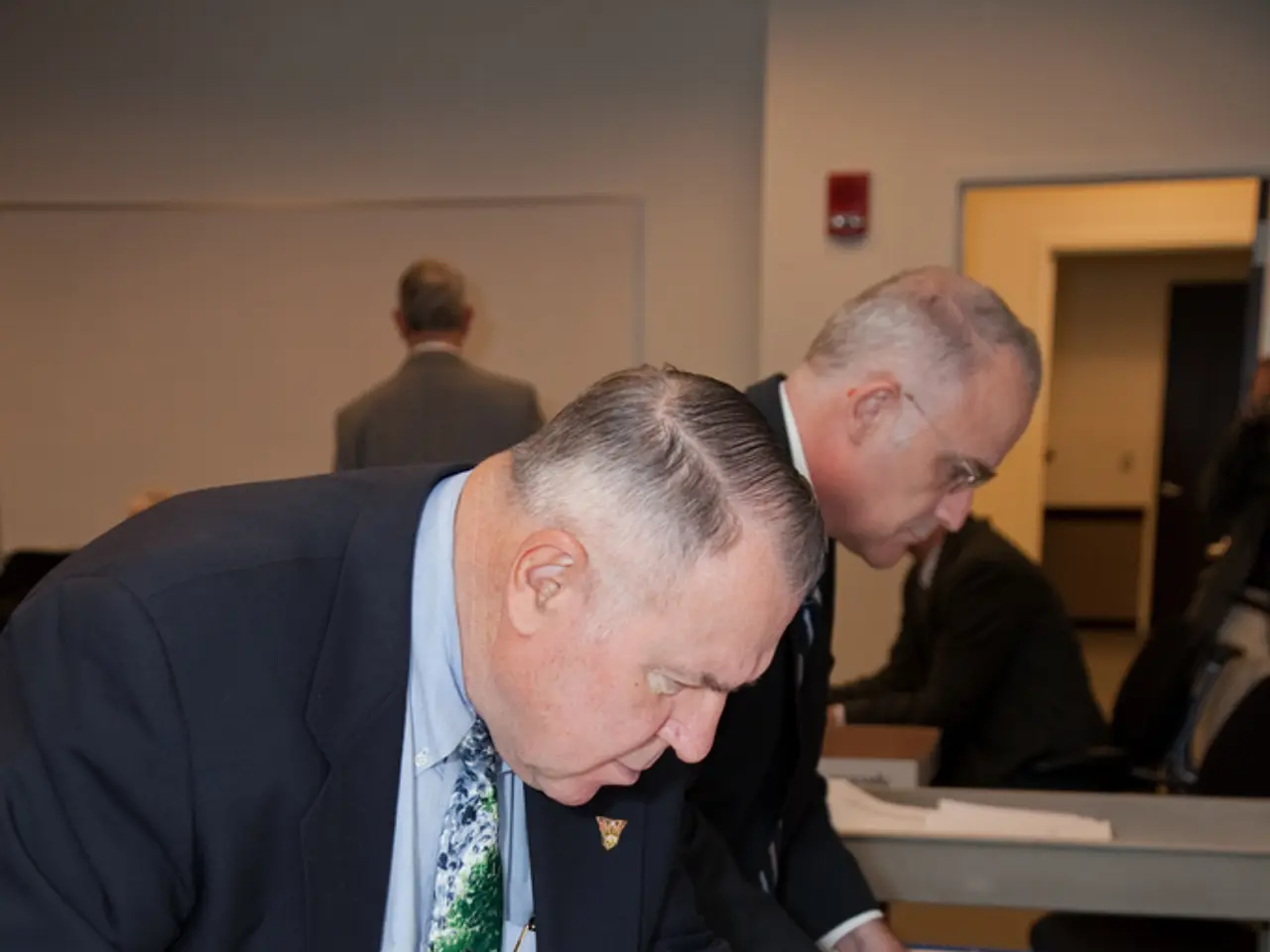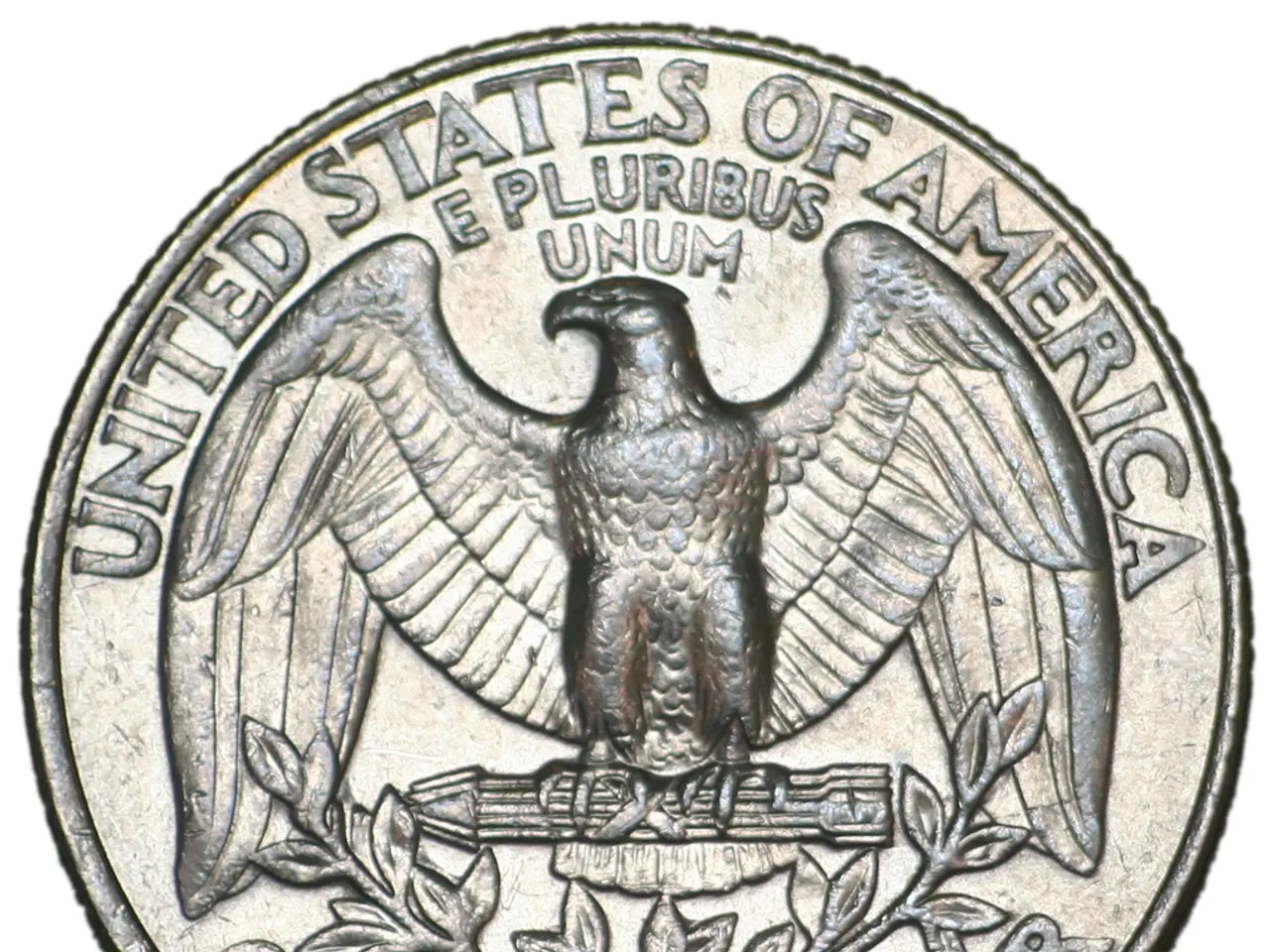U.S. Federal Reserve disregards Trump's pressure and maintains current interest rate level - Fed Refuses to Yield to Trump's Pressure, Maintains Current Interest Rates
Whoa, buckle up! The key interest rate in the US, the world's financial juggernaut, is still hanging tough at a hefty level. The US Federal Reserve (Fed) kept the crucial interest rate within a tight range of 4.25 to 4.5 percent in their recent gathering. This decision comes despite President Donald Trump's pesky demands for a quick rate drop.
If you're thinking, "Wait a minute, haven't we seen some rate cuts lately?", You'd be right! In 2024, there were indeed two cuts, but 2025 has been a different story. Many economic analysts anticipated the central bank would keep things status quo and, predictably, they were right.
What's the Big Deal About this Interest Rate?
This interest rate is probably the Fed's most potent weapon. Its primary purpose is to strike a balance between controlling inflation and keeping unemployment in check.
By adjusting the interest rate, the Fed can determine the interest banks pay to borrow from them. In turn, this interest rate influences the costs consumers and businesses pay for loans, such as mortgages, car loans, business financing, and even credit card interest rates.
So, what happens when the Fed lowers the interest rate? The answer's simple: Lower interest rates make loans cheaper for consumers and businesses, which injects more spending power into the economy and potentially boosts economic growth.
Why in the World Does Trump Want Lower Rates?
The US Federal Reserve, like the European Central Bank in the Eurozone, operates independently, which means politics usually takes a backseat when it comes to interest rate decisions. But politics sure does love to creep in! In the US, President Trump has been vocal about his desire for lower rates to spur the economy even further.
To make his point clear as crystal, Trump's been firing off barbs at Fed Chairman Jerome Powell, calling him a buffoon last week and a dunce this week. Not to mention, Trump's previously suggested Powell should mimic the European Central Bank's strategies, with their key interest rate currently resting at a comfortable 2.0 percent.
But Guess Why the Fed Isn't Caving In?
Well, it's a combination of factors:
- Inflation indicators: The Fed's content with the current inflation rate being close to its target of 2 percent. Additionally, the labor market remains robust, making the need for stimulus through lowered rates less pressing.
- Economic uncertainty: With Trump imposing or threatening tariffs on imports, there's a lot of unpredictability in the air. Trump's tariffs add a layer of stress to the stock and bond markets, making the Fed cautious about making big moves.
- Geopolitical instability: The ongoing tension between Iran and Israel could escalate into a military conflict. Such a scenario would cause a disruption in the oil market, resulting in higher oil prices that could, in turn, slow down the US economy.
- Prioritizing long-term goals: The Fed is adamant about meeting its mandate of supporting maximum employment and ensuring a steady inflation rate. So, instead of reacting to short-term political pressures, the Fed chooses to focus on achieving its long-term economic objectives.
The Federal Reserve now expects the economy to grow at a slower pace, anticipating a 1.4 percent growth this year. In comparison, in March, they had forecasted a growth of 1.7 percent. The inflation rate is also anticipated to rise to 3.0 percent, up from the previously predicted 2.7 percent.
Here's a Quick Recap:
The Fed prioritizes its economic mandates over political pressures, choosing to maintain high rates to sustain price stability and carefully assess the evolving economic landscape instead of bowing to transient demands for rate reductions from President Trump.
- Interest Rate
- Federal Reserve
- Donald Trump
- Central Bank
- Federal Reserve System
- US President
- United States
- Economic Conditions
- Inflation
- labor market
- European Central Bank
- Jerome Powell
- Trade Policies
- Stock Market
- Bond Market
- Middle East
- Military Conflict
- Oil Market
- Labor Market
- Tariffs
- Economic Outlook
- Economic Growth
- Inflation Pressures
- Employment
- FOMC (Federal Open Market Committee)
- Given the current economic conditions, the Federal Reserve's decision not to lower interest rates is in line with maintaining price stability and meeting its mandate of supporting maximum employment and ensuring a steady inflation rate, despite President Donald Trump's pleas for lower rates.
- The Commission, in keeping with the objectives of the common agricultural policy, has also taken steps to ensure that the Commission's proposals for business financing, such as loans and credit, are implemented consistently, thus supporting the economic growth and stability of the agricultural sector.







